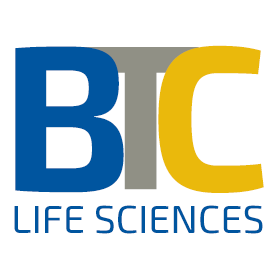New promising antibodies against SARS-CoV-2
Study in Science: Combination of two molecules simultaneously attacks multiple sites on the surface of the virus
An international research team led by the University of Bonn has identified and further developed novel antibody fragments against the SARS coronavirus-2. These “nanobodies” are much smaller than the classic antibodies used to treat US President Donald Trump, for example. They therefore penetrate the tissue better and can be produced more easily in larger quantities. The researchers at the University Hospital Bonn have also combined the nanobodies into potentially particularly effective molecules. These attack different parts of the virus simultaneously. The approach could prevent the pathogen from evading the active agent through mutations. The results are published in the journal Science.
Antibodies are an important weapon in the immune system’s defense against infections. They bind to the surface structures of bacteria or viruses and prevent their replication. One strategy in the fight against disease is therefore to produce effective antibodies in large quantities and inject them into the patients. The outgoing US President Donald Trump probably owes his rapid recovery to this method. However, the antibodies used to treat him have a complex structure, do not penetrate very deeply into the tissue and may cause unwanted complications. Moreover, producing antibodies is difficult and time-consuming. They are therefore probably not suitable for widespread use.
“We focus on another group of molecules, the nanobodies,” explains Dr. Florian Schmidt, who heads an Emmy Noether group on this promising new field of research at the University of Bonn’s Institute of Innate Immunity. “Nanobodies are antibody fragments that are so simple that they can be produced by bacteria or yeast, which is less expensive.”
However, the immune system produces an almost infinite number of different antibodies, and they all recognize different target structures. Only very few of them are for example capable of defeating the SARS coronavirus-2. Finding these antibodies is like searching for a single grain of sand on Germany’s Baltic coast. “We first injected a surface protein of the coronavirus into an alpaca and a llama,” Schmidt explains. “Their immune system then produces mainly antibodies directed against this virus. In addition to complex normal antibodies, llamas and alpacas also produce a simpler antibody variant that can serve as the basis for nanobodies.”
A few weeks later, the researchers took a blood sample from the animals, from which they extracted the genetic information of produced antibodies. This “library” still contained millions of different construction plans. In a complex process, they extracted those that recognize an important structure on the surface of the coronavirus, the spike protein. “Altogether we obtained dozens of nanobodies, which we then analyzed further,” explains Dr. Paul-Albert König, head of the Core Facility Nanobodies at the Medical Faculty of the University of Bonn and lead author of the study. […]
Participating Core Facilities: The authors acknowledge the support from the Microscopy Core Facility. Furthermore, the Nanobodies Core Facility is affiliated with this study.
Participating institutions and funding:
Institutions from Germany, Sweden and the USA were involved in the study. Diffraction data were collected at Stanford Synchrotron Radiation Lightsource (SSRL) and at the Advanced Photon Source (APS) at Argonne National Labs in the USA. In Germany, the study was financially supported by the Medical Faculty of the University of Bonn, the German Research Foundation, the Klaus Tschira Boost Funds, the Federal Ministry of Education and Research, the Baden-Württemberg Foundation and the MWK Baden-Württemberg. In the USA, the Bill and Melinda Gates Foundation, the U.S. Department of Energy, the National Institutes of Health (NIH), the National Institute of General Medical Sciences (NIGMS) and the National Cancer Institute (NCI) funded the project, in Sweden the Swedish Research Council and the Knut and Alice Wallenberg Foundation. The founders of the company Dioscure were supported by the enaCom Transfer Center at the University of Bonn providing a link between research and industry with its offers. As University of Bonn’s IP Service Provider, PROvendis GmbH negotiates the commercialization contract with Dioscure.
Publication: P.-A. König et al.: Structure-guided multivalent nanobodies block SARS-CoV-2 infection and suppress mutational escape. Science; DOI: 10.1126/science.abe6230







